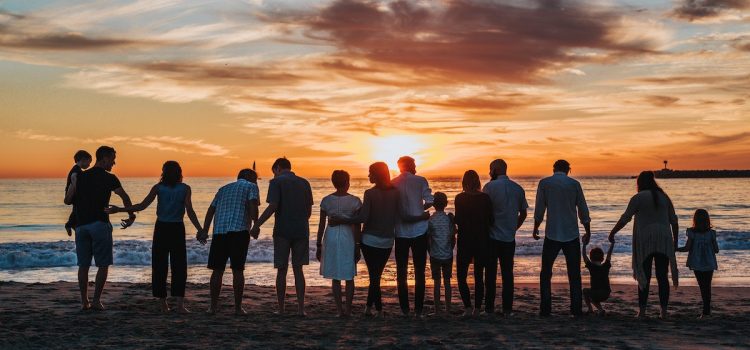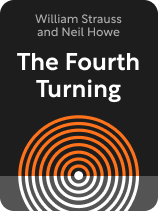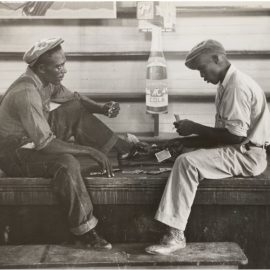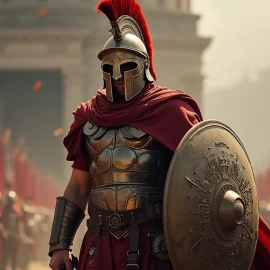

This article is an excerpt from the Shortform book guide to "The Fourth Turning" by William Strauss and Neil Howe. Shortform has the world's best summaries and analyses of books you should be reading.
Like this article? Sign up for a free trial here.
Which generation are you? What role do you play in society right now? Do you fit the archetype?
According to historian William Strauss and consultant Neil Howe, each generation in society fits into one of four different archetypes: the Prophet, the Nomad, the Hero, and the Artist. In The Fourth Turning, they discuss the role the generations play in each cycle of history.
Read on to learn about the Strauss-Howe generational theory, its applications, and its implications.
The Strauss-Howe Generational Theory
The birth range of a generation is about 15 to 25 years—approximately the same length as a Turning—and the pattern proceeds almost universally in this order. Those born on the cusps of generational divides can be sorted based on the generation they most identify with—for example, the Boomer generation spanned from approximately 1943 to 1960, but someone born in 1961 might identify with the Boomer generation, while someone born in 1959 might identify with Generation X.
(Shortform note: Critics of the Strauss-Howe generational theory argue that distinctions between age groups like the ones Strauss and Howe make are arbitrary and unsupported by solid evidence. They point out that different theories on generations contradict each other and often use such vague criteria that they become useless. Others point out that generational divisions presume that people have more in common with strangers their own age than with older or younger people they know very well. Further, such divisions are often just used as marketing tools to target groups for certain products.)
Archetypes and Their Roles
The authors explain that, for every archetype, each phase of life is accompanied by unique social roles. The childhood phase is defined by receiving support from others and learning morals. The way society views and treats children varies with the Turnings, shifting back and forth between the belief that children need to be highly protected and looked after and the belief that they need little protection with a tendency toward hands-off parenting.
(Shortform note: Some experts have addressed the past few decades’ shift toward more protective parenting and attribute it to societal factors rather than cyclical changes. They point out that society has shifted away from tight-knit neighborhood communities where parents and children all know each other, so there are fewer opportunities for children to socialize away from home. Additionally, schools have become more and more dominant in children’s lives, and the idea of a pedagogical method of child-rearing has spread from schools to homes. This causes parents to feel they need to constantly monitor their children rather than trusting them to play and grow freely.)
Young adulthood is defined by service to society and the testing of morals. It’s the age where people are building and pursuing their dreams, forming families, and carrying out the work that keeps society moving such as lower-level work and military service. The degree to which young adults respect and carry on the work of older generations varies with the Turnings, shifting between dutiful conformity and rebellious individualism.
(Shortform note: Some experts suggest that there is an intermediary life stage between childhood and adulthood called emerging adulthood, which spans ages 18 to 25. Research shows that the brain continues to develop during this age range, and most people in this age group report still feeling like children in some ways. During this period, people are still figuring out their identities and what kind of future they want to build. The addition of this generational category may better represent the roles of people under 25 than a category that places a 21-year-old and a 39-year-old in the same life phase.)
Midlife is defined by managing society and upholding morals. This is when people are reaping the rewards from their work during young adulthood, making their dreams a reality, and beginning to take on leadership roles in society. Depending on the Turning, mid-lifers’ leadership roles shift between being more pronounced in politics and being more pronounced in culture.
Elderhood is defined by leading society and passing on morals to younger generations. People are relieved of the burden of work and spend their time in leisure and recreation, or they take on society’s most powerful leadership positions. The influence that Elders have on society shifts with the Turnings between culture and politics—when mid-lifers are wielding greater influence in politics, elder influence shifts to culture and vice versa.
As they go through the phases of life, the archetypes take on new roles and characteristics, such as the following:
- Prophets are born during a High. In childhood, Prophets are coddled, and they grow into self-centered rebels who seek societal change. They are judgmental in midlife but can provide wise judgment in their elder years.
- Nomads are born during an Awakening. In childhood, Nomads are loosely parented or neglected. They feel estranged and are stigmatized in young adulthood, but they become sensible mid-lifers who provide practical leadership, and they’re hardy and reliable in elderhood.
- Heroes are born during an Unraveling. In childhood, Heroes are heavily protected. They have a strong sense of teamwork, duty, and self-sacrifice in young adulthood, but grow arrogant in midlife. As elders, they find the values they fought for under attack by the Prophet young adults.
- Artists are born during a Crisis. In childhood, Artists are overprotected. In young adulthood, they’re thoughtful and deferential. They make for ambivalent midlife leaders and compassionate elders.
The authors discuss generations throughout history. The generations both shape and are shaped by the Turnings as they pass through them.
- The Lost generation, a Nomad generation born between 1883 and 1900
- The G.I. generation, a Hero generation born between 1901 and 1924
- The Silent generation, an Artist generation born between 1925 and 1942
- The Boomer generation, a Prophet generation born between 1943 and 1960
- Generation X (or Xennials), a Nomad generation born between 1961 and 1981
- The Millennial generation, a Hero generation born beginning in 1982 (the authors don’t give a firm end date for this generation’s birth years)
(Shortform note: Some of these generational monikers were coined by Strauss and Howe themselves, specifically the G.I. generation and Millennials. Gertrude Stein is responsible for coining the Lost Generation, and the first known use of the Silent Generation designation was by an unnamed writer in Time magazine in the 1950s. Baby Boomer was first used in the late 1970s by The Washington Post, and Generation X was first used in a photo essay by Robert Capa. The generation after Millennials is generally known as Generation Z, but some other proposed names include Founders, Homelanders, and iGeneration.)
| Generational Theory in Other Cultures The authors focus exclusively on Anglo-American history in their analyses and don’t address if or how these theories apply in other countries or geographic areas. Many of the cyclical shifts they describe don’t appear in other cultures. For example, much of Chinese culture matches the authors’ descriptions of a High and has for centuries. Strong government, collectivism, duty, family stability, and strict gender divisions have long been hallmarks of Chinese culture, suggesting that they haven’t experienced the cyclical trends the authors describe. China has shown greater fluidity in areas like income inequality, which has fluctuated significantly over the past few decades, spiking between the 1980s and 2008 and then falling slowly. However, experts argue that this has to do with the increasing globalization and technological advancement being seen across the world, suggesting that it’s not a cyclical trend. |
(Shortform note: The authors further explain generational archetypes in Generations, and much of the information in The Fourth Turning builds on the “generational theory” they presented in this book.)
Exercise: Identify Your Generational Role
According to Strauss and Howe’s theory, everyone fits into a generation that plays a specific role in each Turning. Identify what generation you belong to and how that affects your role.
- Based on your birth year, which generation do you belong to? In what ways do you relate to the authors’ descriptions of your generation? If you’re a Millennial (of the Hero generation), for example, did you feel highly protected by your parents as a child?
- What is your generation’s role in the Fourth Turning, and how do you see that manifesting? If you’re a Millennial, for example, do you feel your generation has united under a sense of collective duty to tackle the problems of the Crisis?
- What actions could you take to make the best use of your generation’s skills and traits to minimize the negative impacts of the Crisis? If you’re a Millennial, this may include teamwork-driven activities like fundraising for oppressed groups, volunteering to help with campaigns for politicians who reflect your values, or raising awareness of issues like income inequality.

———End of Preview———
Like what you just read? Read the rest of the world's best book summary and analysis of William Strauss and Neil Howe's "The Fourth Turning" at Shortform.
Here's what you'll find in our full The Fourth Turning summary:
- How Anglo-American history follows a pattern of four 15 to 25-year periods
- How the behaviors of different generations define these Turnings
- Predictions about the next Turning—a Crisis






